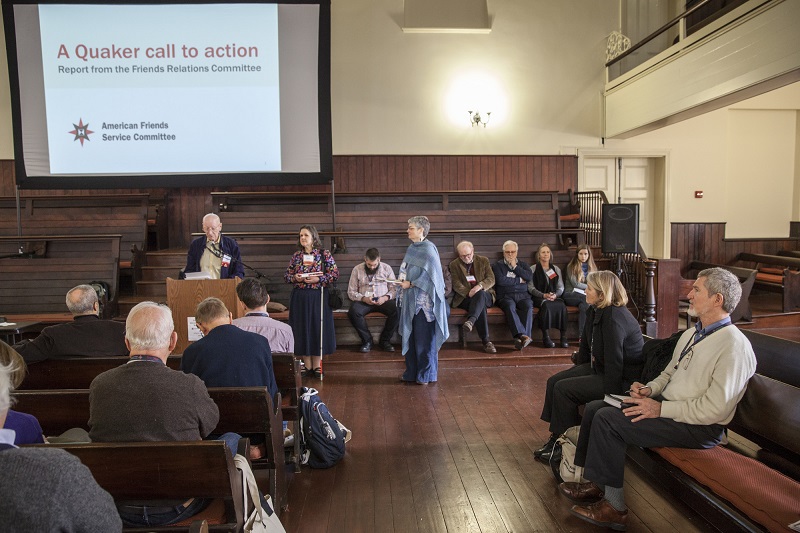
Dan Seeger delivering the introduction to the Friends Relations Committee Report at the 2016 Meeting of the AFSC Corporation AFSC
The following is the text read by Dan Seeger, clerk of the Friends Relations Committee in March, 2016 at AFSC's annual meeting of the Corporation as part of the report of the committee.
An article was published in The New York Times on February 11, 2016. It reported that scientists, for the first time, had detected gravity waves. The gravity waves they detected were created by the collision of two black holes a billion light years away. The detection of these gravity waves is considered a final confirmation of Einstein’s general theory of relativity, and of his vision of a universe in which space and time are interwoven, and able to stretch and shrink.
The story reminds us of how far we have come since Galileo first pointed a primitive telescope at the heavens and determined that the earth revolved around the sun. This contradicted the Biblical understanding of religious authorities that the earth was at the center of the Creation. And in any case, religious authorities were suspicious of too much interest in material reality, feeling one needed to escape from the things of this world in order to be worthy of getting to Heaven.
Galileo was put under house arrest, was pilloried in various ways, was forced to recant, and there was inaugurated a long culture war between science and religion which persists to this day.

Scientists, preoccupied with the materiality of the world and with evolutionary chains of causes and effects and with random chance happenings, see a world of mechanism in which there is less and less room for interiority and spirituality, and less and less likelihood of a Creator God. They find it easy to see the human estate as an accidental by-product perched in a tiny corner of incomprehensible stretches of space and time.
Friends, from the beginning, have affirmed the unity of spirit and matter, and have rejected the dualism traditionally practiced by both scientists and religionists. Friends saw the world itself as a divine milieu. They refused to regard some days as more sacred than others, and so avoided the celebration of Christmas and Easter. Their meeting houses were not separate places set apart and distinguished by special architecture, for they saw all the world was sacred.
Friends communed with God through the world, living in the world and making themselves available to address the world’s needs. Most importantly, they saw human beings not as separate and apart from each other, but as members one of another. They saw that the creative principle of the universe was alive in each and every human being, giving every person’s life an incomprehensible gravity and importance.
Early Friends saw that wherever people gathered to further the causes of justice and peace, the ordinarily dim outlines of the City of God, which George Fox called “the New Jerusalem,” were brought luminously into view.

AFSC Corporation meetings are a contemporary expression of this traditional Quaker understanding of the unity of matter and spirit. Each Corporation member is a channel connecting the life in worship of the Religious Society of Friends with the efforts of the American Friends Service Committee to bring closer to reality the balance, order, harmony and peace which is the natural destiny of the Creation. It is only by keeping alive this connectedness between our practical activism and our life in worship that we will know for certain what, in existing circumstances, we are called upon unfailingly to do.
Related Content
The Third Reconstruction: Moral fusion politics & working for justice